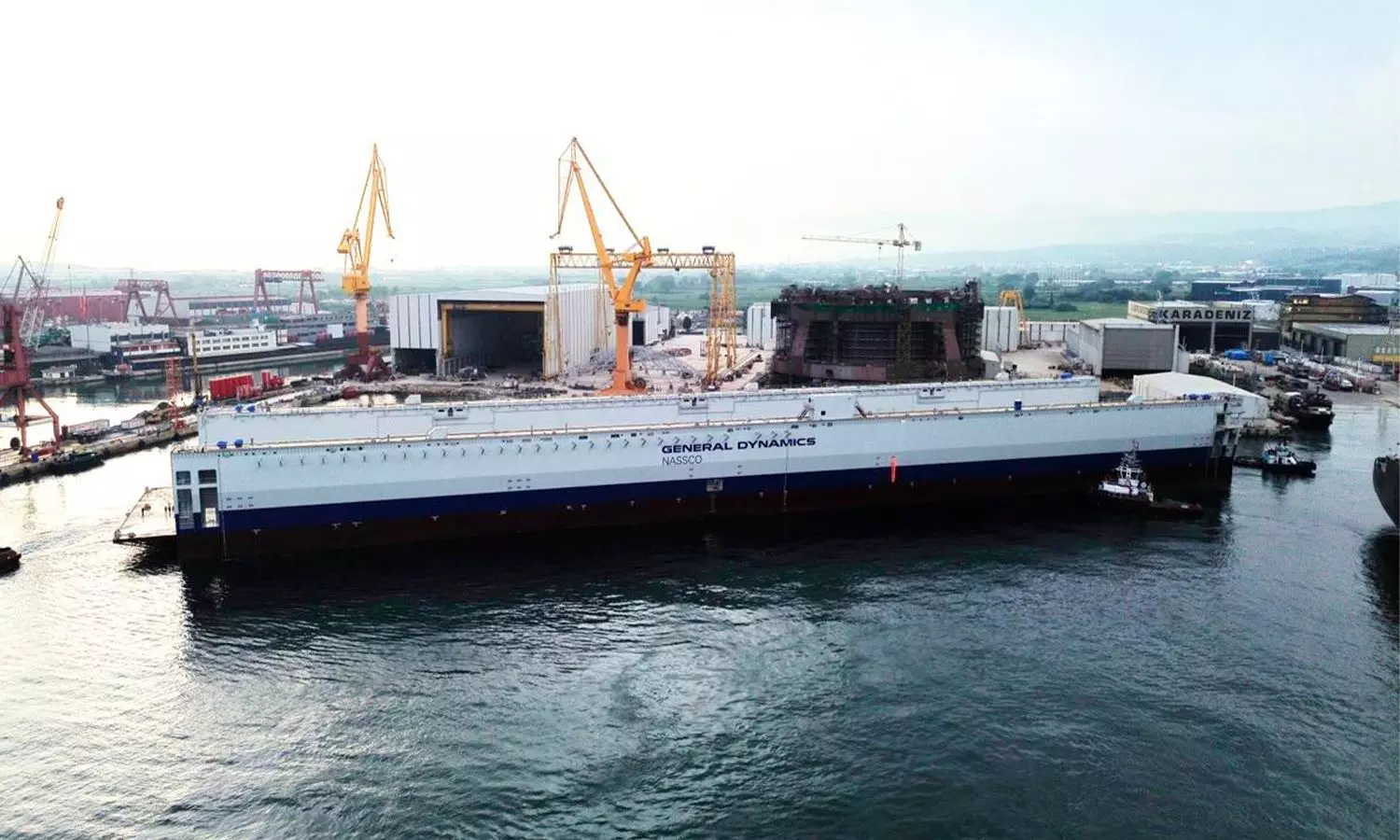Kuehne+Nagel delivers Türkiye’s largest floating drydock to USA
Kuehne+Nagel completes the complex delivery of Türkiye’s largest floating drydock to General Dynamics in San Diego.

Kuehne+Nagel has successfully delivered the largest floating drydock ever built in Türkiye to the United States in a complex transoceanic logistics operation. Commissioned by General Dynamics NASSCO, the project involved transporting a 17,300-tonne, 253-metre-long drydock from a shipyard in Yalova to San Diego, navigating through two oceans and logistical hurdles of massive scale.
Floating drydocks are critical in the maritime sector, used for servicing vessels below the waterline. Unlike traditional drydocks, they can be moved, allowing shipowners to service vessels in different locations. However, these structures lack propulsion and must be towed or transported, a challenge that requires meticulous engineering and maritime expertise.
“For our team, the project started the moment the mooring ropes were untied,” said Aliye Erkan Bıyık, National Project Logistics Manager at Kuehne+Nagel Türkiye. The drydock was towed by four tugboats into open water, where it was prepared for loading onto the BOKA Vanguard, one of the world’s largest semi-submersible heavy-lift vessels, operated by Boskalis.
Positioning the drydock onto the 275-metre-long BOKA Vanguard required days of planning and precision. Leveraging the submersible capabilities of the vessel, support from tugboats, and a round-the-clock crew, the drydock was gradually floated over and secured. “We had checklists, then checklists for the checklists,” Bıyık added, underlining the scale of preparation involved.
The loading and lashing process took over three days and involved additional support boats for crew and cargo coordination. Every centimeter and cable was checked and double-checked to ensure safe passage across the Atlantic and Pacific Oceans. Due to its size, the BOKA Vanguard was unable to use the Panama Canal, making the voyage even more arduous as it braved open ocean swells and waves up to 20 meters high.
The operation underscores Kuehne+Nagel’s growing footprint in global project logistics and its capability to manage oversized, high-stakes cargo movements with surgical precision. What may appear as a simple heavy-lift job was, in reality, a masterclass in marine engineering, planning, and execution spanning continents, timelines, and logistical complexity.


